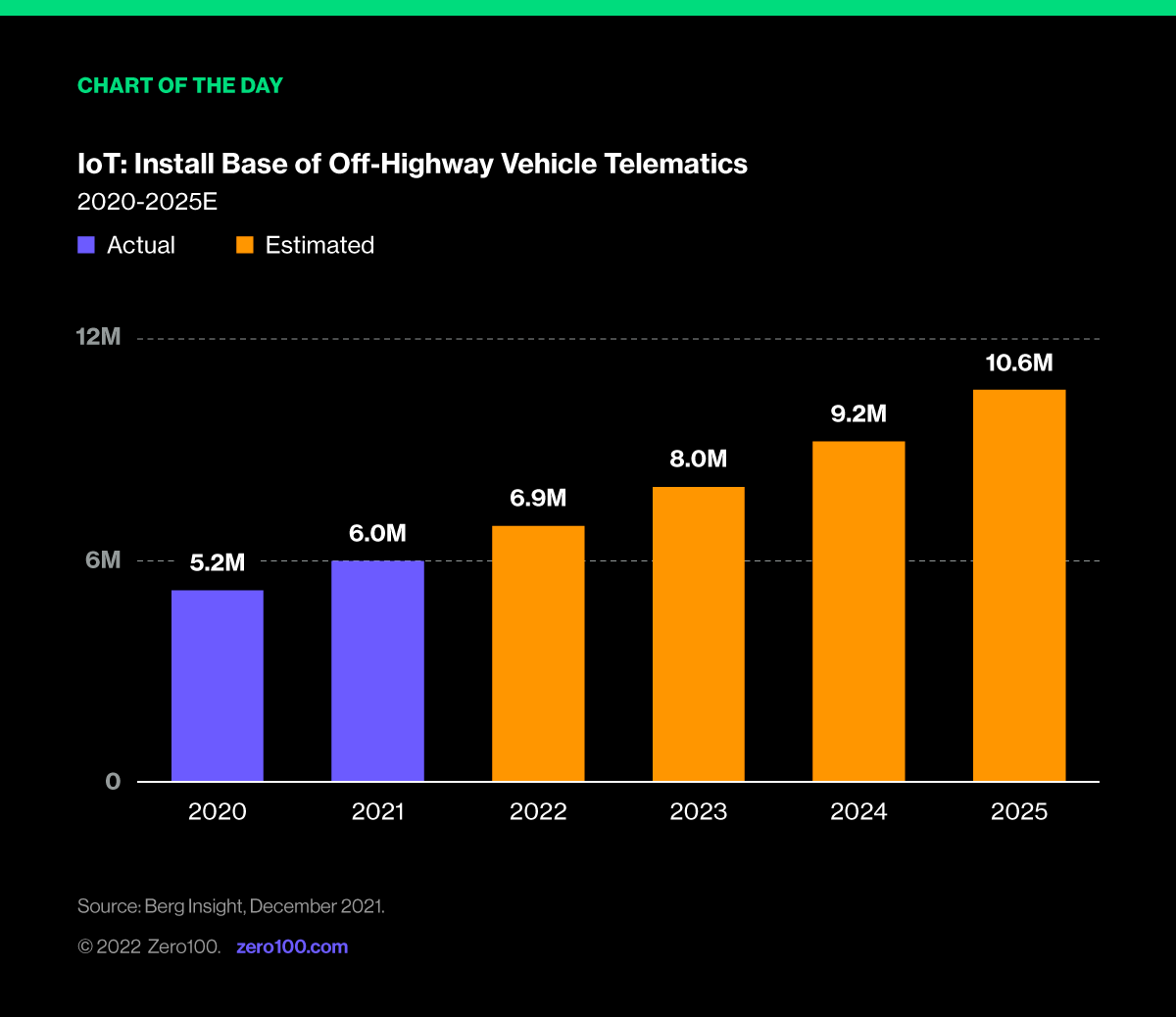
Right-to-Repair: Tick, Tick, Boom
After a three-year reprieve on right-to-repair mandates, Industrial Equipment manufacturers are waking up to a cascading set of new laws that could pose new regulatory and compliance obligations. Moreover, many of these new policy frameworks are designed to address products specific to B2C (not B2B). What could possibly go wrong?
Dude, Where's My Tractor?
In a recent report from the eastern front of the continuing Russia-Ukraine war, a John Deere dealership in Melitopol reported the wholesale theft and looting of $5 million dollars of farm equipment and machinery. Utilizing onboard GPS, nearly 30 missing vehicles (including tractors, seeders, and combine harvesters) were located . . . as far as 700 miles away in Chechnya. Thanks to built-in JDLinkTM telematics, the stolen equipment was remotely disabled or effectively “bricked” – thereby creating a high-tech disincentive for the illegal export of capital goods by an occupying force (Article 97 of the Fourth Geneva Convention, notwithstanding).
While the use case above qualifies as a grim application of a novel feature set, the adoption and evolution of this capability within industrial equipment fleets has become widespread in recent years. The install base of OEM telematics systems for off-highway vehicles is growing at a +15.4% CAGR. The category-leader boasts over a million connected assets. And Caterpillar's Chief Digital Officer consistently reasserts the following ambitions for his organization: “I will know we're game changers when our internal partners and dealers are plugged into our digital infrastructure and everyone is benefitting from immediate access to our data and services.”
In fact, the industry has moved so far / so fast that the right-to-repair conversation in B2B circles is arguably more mature here than in many categories of B2C...

The Tear Down
When we think about the debate over right-to-repair, we typically think about the tension between device proliferation vs. “closed” ecosystems, modular design vs. protection of intellectual property, and planned obsolescence vs. sustainability. In other words, we think: Why does it cost so DAMN much to repair my cracked iPhone screen? For that matter, why do I ALWAYS get nominated to take that overly ambitious group selfie? Is it the freakishly long arms? But I digress...
Comparatively few people think about the Far West Equipment Dealers Association (FWEDA). Back in September 2018, this trade group (representing John Deere, Case IH, New Holland, Caterpillar, etc.) issued a statement of principles conceding that end users (read: farmers) should be equipped with tools and materials sufficient to maintain, diagnose, and repair – but not modify – machinery without going through an authorized dealership or service center. The agreement also started a countdown to a voluntary enforcement date of January 2021.
By the time that target date came and went without significant change to the status quo, over 25 state legislatures had already taken up consideration of right-to-repair laws – replacing a complex aftermarket service challenge with the new prospect of an impending compliance nightmare.
Big Laws, Narrow Scope
As we enter this new phase of scrutiny from public officials, it's clear that the potential ramifications of pending legislation will be both pervasive and persistent. As such, it's important for supply chain professionals to track the perceived tradeoffs across the following right-to-repair initiatives:
# 1 Indice de Réparabilité
Last year, France introduced a “Repairability Index” for five categories of consumer electronics and appliances. Primarily positioned as an anti-waste measure, the “badging” of products at point-of-sale is designed to address the fact that only 40% of broken electronics ever go through a repair (vs. a replacement) loop. In theory, this would be followed by a “Durability Index” in 2024 that could gradually extend the system to a wider basket of consumer goods.
#2 Resolution 2022/2515(RSP)
In April, the European Parliament voted in plenary (509-3) to adopt the European Commission's draft motion for a right-to-repair resolution, which would include extending the legal framework for the two-year minimum liability period for select product categories. In response to the perception that a U.S. legal equivalent is “only a matter of time,” Microsoft has already commissioned independent studies to demonstrate the environmental benefits of such initiatives – including up to a 92% reduction in emissions and waste generation across seven device categories.
#3 Freedom to Repair Act (H.R. 6566)
In February, a trial balloon was introduced in Congress, expanding beyond the current Executive Order on Promoting Competition in the American Economy. In its early draft form, the proposed law suggests selective amendments to Section 1201 of the Digital Millennium Copyright Act (DMCA), severing the violation of software locks with the violation of copyright. If this bill (or something similar) moves forward, it will fundamentally alter the legitimacy of aftermarket and resale communities that have gained momentum (IFixIt, Restart, Repair & Share, Back Market)—hence Apple's preemptive moves announced last week.
While the data points above are beginning to narrow the trajectory of future regulatory developments, they do not delineate between B2C vs. B2B business models. In fact, all of these examples were developed primarily in response to the current market for Consumer Electronics (if not smartphones, specifically). Reviewing the implications of these narrowly crafted frameworks on other business models is critical as we prepare for the growing likelihood of their future adoption and enforcement.
Top questions to start asking internally include:
- How do these policies potentially impact our current or planned aftermarket service programs?
- What impact will they have on estimated product lifespan and refresh cycles? How do various scenarios filter down to our demand planning and inventory management for spare parts?
- Where do our cost / profit margin assumptions shift as repair and upgrade provisions in current Service Level Agreements (SLAs) get extended?
Critical Reading
FAST COMPANY
68% of U.S. Execs Admit Their Companies Are Guilty of Greenwashing
Commentary: A fascinating new Harris poll underscores the persistent gap between the widespread desire among executives to link compensation to ESG goals, but an open admission of uncertainty regarding actionable next steps exists.
#ESG #sustainable
THE NEW YORK TIMES
Amazon Union Loses Vote at Second Staten Island Warehouse
Commentary: Following from our post last month on the “New Labor Movement,” a second unionization vote at Amazon's LDL5 facility in Staten Island failed by a vote of 380-618, adding another data point to the growing divergence in union elections for distinct types of workers (e.g., full-time vs. part-time).
#labor #unions
THE VERGE
Department of Energy Boosts Domestic Battery Supply Chain with Billions in Funding
Commentary: The DOE announced $3.1 billion in investments to establish, retrofit, and expand commercial battery facilities, signaling a growing need to find second uses for spent batteries as EVs approach 5% of new sales.
#battery #energy